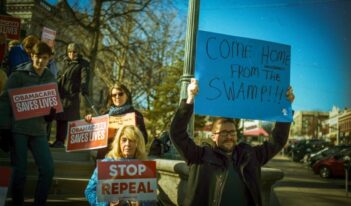
Insurance, if better understood, holds great promise for businesses, consumers, and more.
Insurance is an extraordinarily useful tool to manage risk. When it works as intended, it provides financial protection to insurance buyers as they pay a relatively small premium and get protection against a large loss. Despite this advantage, consumers, insurance executives and regulators broadly misunderstand insurance.
Many consumers do not voluntarily buy coverage against potentially risky and serious losses. For instance, fewer than half the residents in flood- and hurricane-prone areas were insured against water damage from Hurricane Katrina and Hurricane Sandy. Likewise, a significant fraction of the population does not have health insurance today, despite the large premium subsidies currently offered in the form of Medicare and Medicaid and tax breaks for employment-based health insurance. A principal reason for this insufficient coverage is that many people tend to view insurance as an investment rather than a protective measure. If after several years one does not make a claim, then there is very likely a feeling that ones’ premium has been wasted.
Insurance firms also behave strangely. After they suffer a severe loss, they may decide that a risk is completely uninsurable rather than determining whether they should increase their premium to cover the risk. For example, prior to 9/11, insurers did not price terrorism risk when providing coverage against damage to commercial property. After 9/11, most insurers refused to offer any terrorism insurance because they feared catastrophic losses from future attacks.
State regulators often constrain insurance premiums because they are concerned that insurance will not be “affordable,” especially to those who are at higher risk. In Florida, for example, the state set up its own insurance company, Citizens, that offers highly subsidized premiums for homeowners’ insurance to residents in hurricane-prone areas. Private insurers were not able to compete against these prices, and Citizens became the largest insurer of homeowners’ coverage in the state. Should the state be hit by a devastating hurricane, all taxpayers in Florida will very likely be required to help pay for Citizens’ losses.
 firms and regulators behave as they do?
firms and regulators behave as they do?Behavior of this kind defeats the three principal purposes of insurance: to provide information via premiums as to the severity of one’s risk; to motivate those at risk to undertake protection against an event that could produce a significant loss but has a low probability of occurrence; and to offer incentives in the form of premium reductions to reward people who invest in risk-reducing measures.
Incentives, rules, and institutions that encourage a constructive role for insurance will ultimately improve individual and social welfare. Several recent pieces of legislation have set the tone for appropriately dealing with risk.
In light of the private insurance industry’s refusal to provide sufficient amounts of terrorism coverage following 9/11, Congress passed the Terrorism Risk Insurance Act in 2002. It provides taxpayer-backed protection to insurers against catastrophic losses from future terrorist attacks if they agreed to make coverage widely available. As a result, businesses are now able to purchase reasonably priced terrorism coverage. To date, there has been no need to call on taxpayers to fund the guarantee, but the risk to taxpayers remains. The legislation is up for renewal in 2014, which presents an opportunity to reexamine the appropriate roles of the private sector and the federal government in providing this coverage.
The Biggert-Waters Act, passed in July 2012, authorizes major reforms to the National Flood Insurance Program over the next five years. Future premiums for structures that have had repetitive flooding will reflect risk so individuals will be aware of the hazard they face. Insured individuals can be rewarded with lower rates if they undertake protective measures. The Federal Emergency Management Agency is in the process of developing more accurate flood maps to set these rates. This legislation authorizes $400 billion per year for this purpose over fiscal years 2013-17.
The Affordable Care Act (ACA) requires insurers to offer health insurance to all U.S. residents who do not currently have coverage through either their job or a public plan. It also levies a tax penalty on those who choose to be uninsured. To deal with the affordability issue, the government will subsidize premiums for some low- and middle-income households. However, with the exception of offering premium discounts for those who engage in a limited set of less risky behaviors, such as not smoking, premiums after 2014 will no longer reflect individual medical risk factors. As a result, some observers are concerned that the modest penalties specified by the ACA may not be enough to encourage low-risk individuals to buy insurance because the premiums they may have to pay will be high relative to the benefits they would expect to receive.
What can be done to make insurance a better policy tool and to avoid adverse side effects of the well-intentioned programs already in place?
One way to convince people of the long-term benefits of insurance is to stretch the time horizon over which the event can occur. Studies have shown that people are much more likely to buy insurance or invest in protective measures if an event such as a hurricane that has a 1 in 100 chance of occurring next year is presented as having a greater than 1 in 5 chance of happening at least once in the next 25 years. And if the disaster does not happen – well, the truth is that the best return on an insurance policy is no return at all. One should celebrate not having a major loss!
Insurers should construct worst-case scenarios for rare events so that they would be able to determine premiums that reflect their best estimate of expected future losses, factoring in the uncertainty of the event’s happening. Insurers should also consider offering multi-year policies if state regulators allow them to price coverage that reflects risk over that period. A multi-year insurance policy with risk-based premiums coupled with a multi-year home-improvement loan to pay for risk-reducing measures may best enable policyholders to reduce their overall costs both today and in the event the insurance coverage is needed, and protect themselves against unexpected fluctuations in premiums.
State insurance regulators should be appointed rather than elected so they are less prone to being influenced by special interest groups and lobbyists. Regulatory decisions should make transparent who stands to benefit from a subsidized insurance program, and who will be paying part of that cost to protect others. State insurance programs, such as Citizens in Florida, should inform residents in the state that property insurance on homes near the ocean, including second homes, is likely to be highly subsidized, and those living elsewhere may bear the expenses of the clean-up following the next severe hurricane.
These concepts, if followed, will increase the chances that insurance is better understood so it can fulfill the roles it is designed to play: reducing future losses and financially protecting those at risk.




